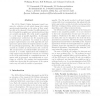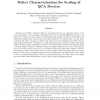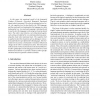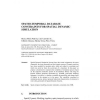47 search results - page 9 / 10 » Changing the Neighborhood of Cellular Automata |
IPPS
2006
IEEE
14 years 1 months ago
2006
IEEE
The GCA (Global Cellular Automata) model consists of a collection of cells which change their states synchronously depending on the states of their neighbors like in the classical...
DFT
2004
IEEE
13 years 11 months ago
2004
IEEE
Quantum dot Cellular Automata (QCA) is amongst promising new computing scheme in the nano-scale regimes. As an emerging technology, QCA relies on radically different operations in...
WSC
2007
13 years 9 months ago
2007
A Monte Carlo methodology is proposed for simulating air traffic blockage patterns under the impact of convective weather. The simulation utilizes probabilistic convective weather...
ISMVL
2007
IEEE
14 years 1 months ago
2007
IEEE
In this paper the emotional model of the humanoid Cynthea (Cybernetic Networked Humanoid Emotional Agent) robot is presented. The robot is explained at two levels: the cognitive l...
GEOINFO
2004
13 years 8 months ago
2004
: Spatial Dynamic Simulation Systems have three main components: the space dimension, the time dimension and the dynamic process. Dynamic processes have been modeled by transition ...




